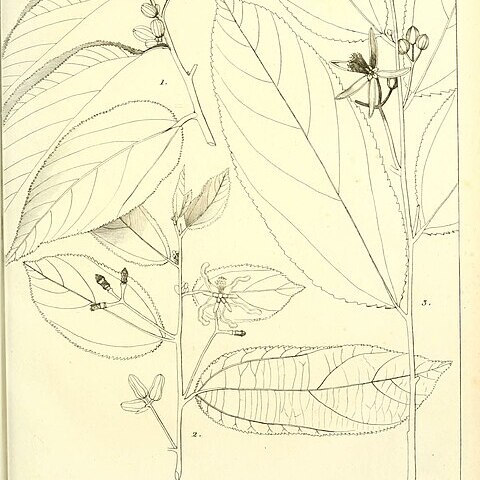Leaf-lamina 4·5–12·5 × 3–7 cm., ovate to ovate-oblong, acutely acuminate at the apex, margins finely crenate-serrate with the serratures somewhat glandular, rounded or slightly cordate at the base, very sparsely pubescent or glabrous on both surfaces, tertiary venation reticulate; petiole up to 10 mm. long, pubescent; stipules up to 0·75 cm. long, linear, finely pubescent.
Inflorescences 2–3-flowered, opposite the leaves; peduncles 2–4 mm. long, pubescent; pedicels up to 5 mm. long, pubescent; bracts similar to the stipules, up to 7 mm. long.
Petals up to 10 mm. in diam., pinkish or purple, circular, with a much narrower nectariferous claw c. 1 mm. long circumvillous within and ledged above.
Androgynophore with a lower glabrous portion c. 1 mm. long and a pubescent upper portion 1 mm. long or often shorter.
Sepals 1·5–2·5 cm. long, linear-oblong, tomentellous outside, glabrous inside, not thickened at the apex.
Fruit up to 2·8 cm. in diam., 4-lobed, densely ferruginously hairy or villous.
Ovary 4-lobed, villous; style c. 10 mm. long, glabrous; stigma-lobes broad.
Shrub or small tree up to 6 m. tall; young branches pubescent.


